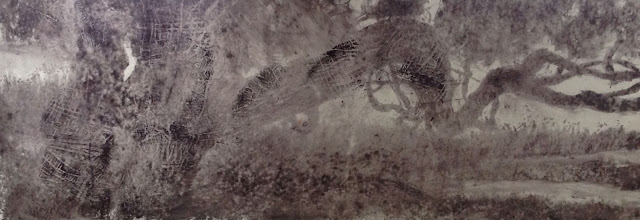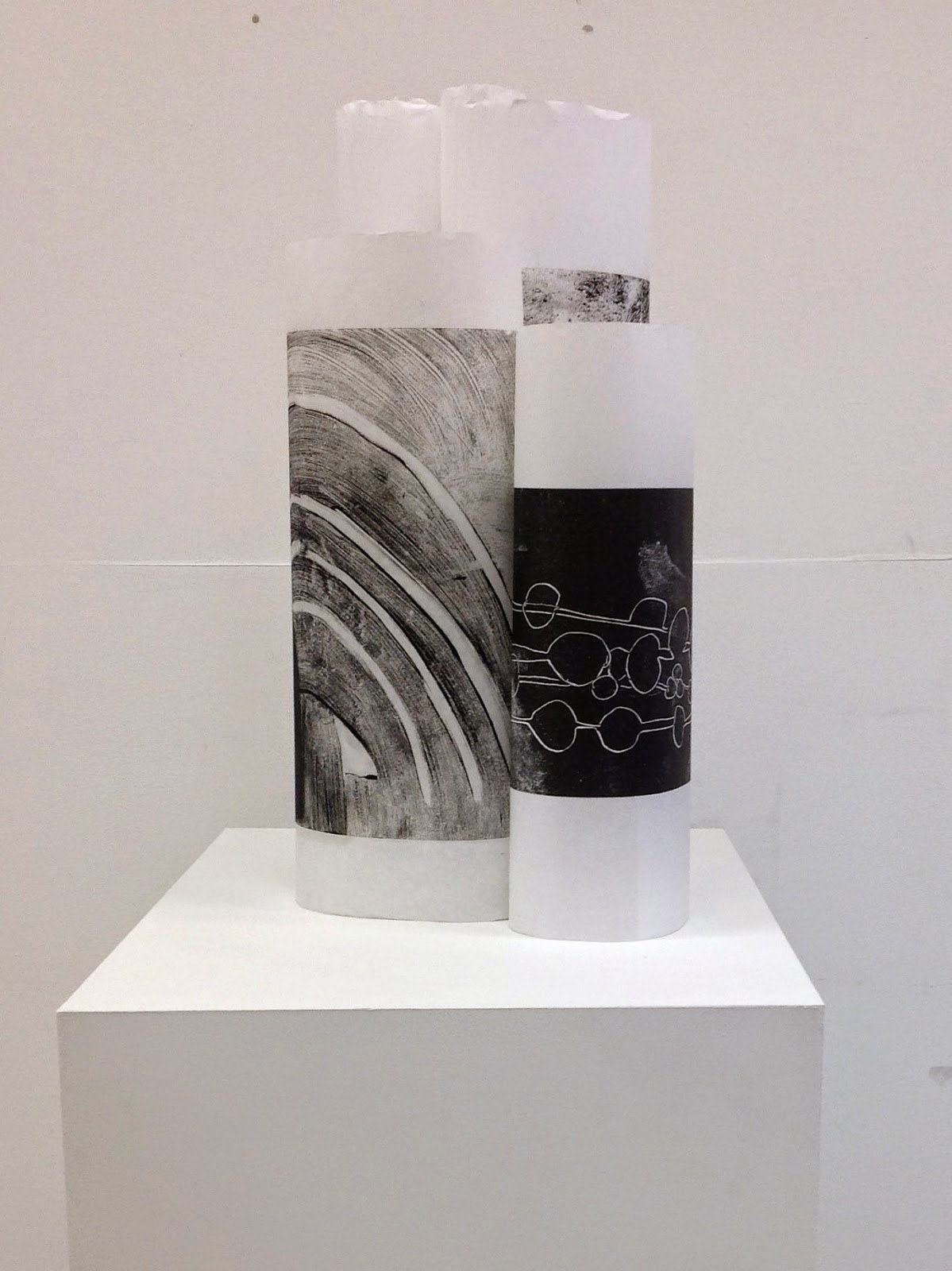Working on my presentation became quite intensive due to three strands of enquiry I had undertaken. It was important to validate and make connections within the three processes; to make links from one slide to another. There were pros and cons to consider. It could have been more straightforward to focus on just one process, thus refining one area and presenting a more fluid and consistent presentation. On the other hand I felt this was not a true representation of my years work. Presenting each strand in chronological order provided a framework and structure. However, there was a danger of overload of information which could appear disjointed and confused. Each approach had its constraints and drawbacks.
My extensive research also revealed a wealth of amazing artists that linked to my practice. The criteria of the presentation with its number of slides, number of artists, time limit was challenging and I had considerable sifting through and pairing down to undertake. As all my work had been produced in monochrome I used this approach in my Presentation which gave it a uniformity. I was not confident enough to deliver verbally without referring to my notes which may have made it rather static and lacking in spontaneity. The arrangement of equipment and screen was not conducive and made it physically very awkward to see the projected images. Equipment should have been placed to the right of the screen and on reflection I would have preferred to stand and deliver!
Unfortunately I ran over time and my last few paragraphs were excluded. I was disappointed as, although not crucial to the presentation they contained and gave explanations and summed up my use of cross cultural aspects both in regard to the process and the final presentation of my work in frottage. I was able to summarise in a limited way and on reflection felt the Presentation engaged my audience throughout and was of a good standard both in visuals and content.
It was a valuable exercise from many aspects, making and defining choices, theoretical analysis and comparison, design, format, clarity of images, typeface etc.
Excerpt from text accompanying last slide:
"This final process using frottage has a simplicity where nature is presented directly and not through a filter of language or image. Michelle Stuart suggests that it is work that transcends what one starts out to do and is somehow transported and takes on a life of its own. It denotes a physical presence which offers the viewer a more extensive opportunity to make their own own layers of meaning and interpretation. Hopefully, it does not leave them feeling bewildered, frustrated and empty but somehow more gratified and identifiable with a time and place.
This simplicity can be perceived as having a more spiritual aspect with its non-intervention of the intellect".
The image below is a frottage taken direct from the ground.
'I WOODSTOCK NY' Michelle Stuart 1973 Frottage 144 x 62 inches
The image below has been created using an intaglio frottage process where earth and rock have been applied to the surface of the support.
'5 MORAY HILL' Michelle Stuart 1973 Intaglio Frottage on Muslin backed paper. Size unavailable.
These two images below have been put forward as my final selection for End of Year Degree Show.
Apparition I (Oak Tree Diptych) Jane Eaton 2015 Presented Kakemono format. Graphite on Paper, Wax and Ink on Paper. Frottage each 420cm x 56 cm
Apparition II (Oak Tree Diptych. Jane Eaton 2015. Presented in Sutra format. Graphite on Paper. Wax and Ink on Paper. Frottage each 340cm x 56cm.












































